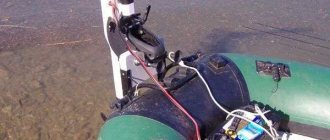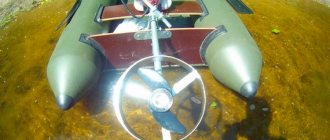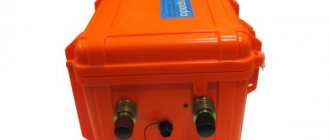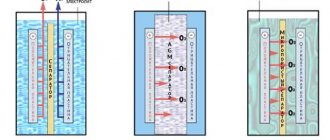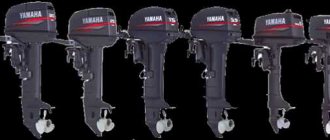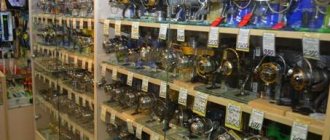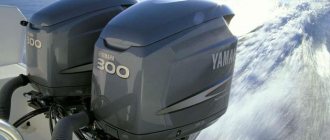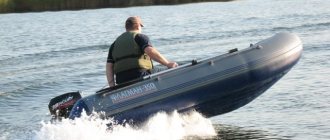I’m probably not lying if I say that every motor boat owner, before buying his first or next outboard motor, wants to know what he will get in the end, or rather, what speed the outboard motor can produce on his boat on his favorite lake/river (underline as appropriate ). Below you will find summary tables from all tests of outboard motors and boats from our website, which indicate the outboard motor, its power, what boat it was on and what maximum speed it was able to develop.
With this information we do not claim to be the ultimate truth. A boat of the same length, but from a different manufacturer, can differ radically both in the design of the bottom and in the total weight. Also, each test had its own conditions, weather, air temperature, water temperature, boat loading (1, 2, 3 people). In addition, a boat motor can be 2-stroke or 4-stroke, which also ultimately affects the maximum speed of the vessel. Here we did not describe all this in detail, so as not to produce duplicate information, all this information is already in separate articles, if necessary, use the search.
In this opus, we just wanted to show what this or that motor is capable of on this or that boat. So to speak, a “fork” of its speeds in different conditions, so that a potential buyer of a motor or boat can approximately determine what he will ultimately get and what speed he can expect.
Don’t judge us harshly, and if anything happens, welcome to the comments.
Speed of boat motors up to 5 hp.
Table No. 1
| boat motor | Boat type and length | Speed (km/h) |
| Yamaha 2 | Inflatable PVC – 3.3 m. | 9 |
| Sailor 2 | Inflatable PVC – 4.0 m. | 7,7 |
| Suzuki 2.5 | Inflatable PVC – 4.0 m. | 9,4 |
| Tohatsu 2.5 | Inflatable PVC – 4.0 m. | 9,6 |
| Mercury 2.5 | Inflatable PVC – 3.0 m. | 10 |
| Sailor 2.6 | Inflatable PVC – 4.0 m. | 8,3 |
| Yamaha 3 | Inflatable PVC – 2.9 m. | 24,6 |
| Inflatable PVC – 3.5 m. | 21,5 | |
| Inflatable PVC – 3.2 m. | 18,8 | |
| Inflatable PVC – 3.6 m. | 22,7 | |
| Inflatable PVC – 3.8 m. | 21,9 | |
| Mercury 3.3 | Inflatable PVC – 2.9 m. | 22,3 |
| Inflatable PVC – 3.1 m. | 22,1 | |
| Inflatable PVC – 3.2 m. | 18,2 | |
| Inflatable PVC – 3.6 m. | 21,5 | |
| Inflatable PVC – 3.5 m. | 20,8 | |
| Inflatable PVC – 3.8 m. | 21,3 |
Verdict
This is the author's opinion. Still, the value of a PVC boat is not in speed, but in mobility, lightness of the hull and affordable price. Early morning or sunset, a rubber band rhythmically swinging on the waves with hunters or fishermen, this is an organic picture. And let aluminum gliders break speed records; it’s not for nothing that they are made of “winged” metal!
Read about inflatable boats with an inflatable bottom for a motor. We also recommend that you read our new article about the features of choosing rubber inflatable boats.
Speed of 5 HP boat motors.
Table No. 2
| boat motor | Boat type and length | Speed (km/h) |
| Yamaha 5 | Inflatable PVC – 3.0 m. | 19,7 |
| Inflatable PVC – 2.9 m. | 26,2 | |
| Inflatable PVC – 3.1 m. | 26,6 | |
| Inflatable PVC – 3.2 m. | 22,0 | |
| Inflatable PVC – 3.5 m. | 25,0 | |
| Inflatable PVC – 3.6 m. | 25,6 | |
| Inflatable PVC – 3.8 m. | 24,8 | |
| Mercury 5 | Inflatable PVC – 2.9 m. | 30,6 |
| Inflatable PVC – 3.1 m. | 30,3 | |
| Inflatable PVC – 3.1 m. | 25,0 | |
| Inflatable PVC – 3.2 m. | 25,7 | |
| Inflatable PVC – 3.2 m. | 30,0 | |
| Inflatable PVC – 3.5 m. | 27,3 | |
| Inflatable PVC – 3.6 m. | 30,1 | |
| Inflatable PVC – 3.8 m. | 27,8 | |
| PowerTec 5 | Inflatable PVC – 3.1 m. | 20,0 |
| Hidea 5 | Inflatable PVC – 3.1 m. | 22,0 |
| Yamabisi 5 | Inflatable PVC – 3.1 m. | 19,0 |
| Parsun 5 | Inflatable PVC – 3.1 m. | 24,0 |
| Suzuki 5 | Inflatable PVC – 3.35 m. | 25,0 |
Boat speed concept
Despite the detailed presentation of the factors influencing speed, it is necessary to consider the concept itself. Boat speed is a variable parameter that depends on many factors (engine, propeller, hull, etc.). Among users, models with casings made of aluminum, plastic and steel are in particular demand. The materials provide not only the strength of the swimming apparatus, but are also responsible for the quality of the bottom sliding along the water surface.
- Fiberglass. It polishes well and is light in weight, thereby increasing the speed of the boat. The downside is the serious susceptibility of the equipment to shocks and deformations;
- Aluminum. This is a true standard of modern shipbuilding. The material is lightweight but more durable than plastic. The same applies to duralumin models. It does increase speed due to its weight, but not as well as fiberglass;
- Steel. The most durable, but heaviest material. It is not used on high-speed boat models, and is more often found on ships of older times.
It is also worth paying attention to the area in which the water apparatus is used. For example, river vessels often move at a speed of 20-30 or 50-60 km/h. Sea ships move at an average speed of 36 knots (approximately 66 km/h). Sports models are capable of surpassing sports cars or motorcycles, accelerating to 200 km/h or more.
Cruising speed
The cruising speed of a motor boat is an indicator of traffic intensity with minimal fuel costs, and it is always lower than the maximum movement capabilities of a watercraft on water. The average operating range of each installed motor determines this factor. To take a closer look at the cruising speed and compare it with the maximum, users simply calculate the number of kilometers traveled per 1 liter of fuel. As for yachts with sails, the concept of average speed is more typical for them, since they often move on tacks.
Maximum boat speed
The maximum speed of a boat on the water is driven by the engines operating at the limit of their capabilities. As a result, fuel consumption while driving increases noticeably. Engine power is not the only factor influencing maximum performance, as it is necessary to take into account the material of the boat's hull, weather conditions and much more.
You might be interested: Yamaha engine for a boat - a variety of choices, as well as a decoding of the engine markings
Medium and unpopular engines over 5 and up to 10 hp.
Table No. 3
| boat motor | Boat type and length | Speed (km/h) |
| Suzuki 6 | Inflatable PVC – 2.9 m. | 31,9 |
| Inflatable PVC – 3.1 m. | 33,1 | |
| Inflatable PVC – 3.2 m. | 30,1 | |
| Inflatable PVC – 3.4 m. | 26,8 | |
| Inflatable PVC – 3.5 m. | 28,3 | |
| Inflatable PVC – 3.6 m. | 31,8 | |
| Inflatable PVC – 3.8 m. | 28,2 | |
| Mercury 6 | Inflatable PVC – 3.6 m. | 25,0 |
| Yamaha 8 | Inflatable PVC – 3.2 m. | 34,0 |
| Inflatable PVC – 3.4 m. | 35,0 |
Water speed records
The fastest motor boat so far remains the Spirit of Australia, which on October 8, 1978, under the control of Ken Warby, showed a speed of 317.596 knots or 511.11 km/h.
Vestas Sailrocket 2 is considered the fastest sailboat so far. At a speed of 65.5 knots, she covered the 500-meter section on November 28, 2012. The fastest electric boat is the Cigarette AMG Electric Drive. It was built by Mercedes-Benz engineers and can accelerate to 160 km/h, while acceleration to “hundreds” occurs in just 3.9 seconds. Motor boats common in Russia, depending on the size and power of the motor, have a maximum speed of 40 to 90 km/h, while the average speed of movement on water on a motor boat is from 25 to 50 km/h.
The speed of the most popular outboard motors is 9.9 hp. (well, 9.8 is included here too)
Table No. 4
| boat motor | Boat type and length | Speed (km/h) |
| Honda 10 | Inflatable PVC – 2.9 m. | 27,4 |
| RIB – 3.1 m. | 24,5 | |
| Inflatable PVC – 3.5 m. | 31,8 | |
| Yamaha 9.9 | Inflatable PVC – 2.9 m. | 30,9 |
| RIB – 3.1 m. | 26,7 | |
| Inflatable PVC – 3.5 m. | 32,5 | |
| Mercury 9.9 | Inflatable PVC – 2.9 m. | 31,5 |
| RIB – 3.1 m. | 29,3 | |
| Inflatable PVC – 3.5 m. | 31,8 | |
| Suzuki 9.9 | Inflatable PVC – 2.9 m. | 28,7 |
| RIB – 3.1 m. | 27,6 | |
| Inflatable PVC – 3.5 m. | 32,6 | |
| Tohatsu 9.9 | Inflatable PVC – 2.9 m. | 30,5 |
| Inflatable PVC – 3.5 m. | 32,4 | |
| Lehr 9.9 | Inflatable PVC – 2.9 m. | 25,0 |
| Parsun 9.9 | Inflatable PVC – 3.5 m. | 42,0 |
| Parsun 9.8 | Inflatable PVC – 3.5 m. | 27,1 |
| Selva 9.9 | Inflatable PVC – 3.4 m. | 32,0 |
| Tohatsu 9.8 | RIB – 3.1 m. | 28,5 |
| Inflatable PVC – 3.85 m. | 34,0 | |
| Inflatable PVC – 3.2 m. | 25,0 | |
| Sail 9.9 | Inflatable PVC – 3.5 m. | 35,6 |
Average kayak speed
Kayaks are rowing boats, which means their speed is highly dependent on the physical strength and experience of the rowers. Models with a length of 3.5 meters are capable of accelerating to 7 kilometers per hour or more, even if their passengers do not make much effort and row calmly. At the same time, if the rowers are inexperienced and do not know how to stay on course, the boats begin to yaw, and their speed can drop to 3-4 kilometers per hour. In such cases, beginners try to gain it by doing accelerations from time to time, but this often only deprives them of strength and leads to rapid fatigue.
In general, experienced kayakers, when going on long trips, try to maintain an average speed of about 6-7 kilometers per hour. This gives them the opportunity to row for 7-8 hours and still feel quite energetic. Of course, by the end of the movement the speed of the kayak will still drop, but the route will be completed.
It is believed that the average speed of kayaks with two or three oarsmen is higher than that of single-person models. This is true for sports models, but does not always apply to tourist models. If a boat goes on a trip with a crew of two or three people, it usually also carries luggage. Under the weight of such a load, the kayak will give a decent draft, the water resistance will increase, therefore, the speed will remain the same. And if the rowers do not know how to work as a team or are very different in physical qualities, it will decrease due to inconsistency of strokes and uncoordinated actions.
Boat motors 15 hp
Table No. 5
| boat motor | Boat type and length | Speed (km/h) |
| Yamaha 15 | Inflatable PVC – 3.4 m. | 45,8 |
| Inflatable PVC – 3.5 m. | 36,0 | |
| Inflatable PVC – 3.6 m. | 33,0 | |
| Inflatable PVC – 3.6 m. | 40,0 | |
| Inflatable PVC – 3.8 m. | 35,0 | |
| Mercury 15 | Inflatable PVC – 3.35 m. | 44,0 |
| Inflatable PVC – 3.4 m. | 44,0 | |
| Inflatable PVC – 3.6 m. | 37,4 | |
| Inflatable PVC – 3.65 m. | 40,0 | |
| Inflatable PVC – 3.85 m. | 40,0 | |
| Honda 15 | Inflatable PVC – 3.3 m. | 36,5 |
| Inflatable PVC – 3.6 m. | 38,3 | |
| Evinrude 15 | Inflatable PVC – 3.8 m. | 42,0 |
| Suzuki 15 | Inflatable PVC – 3.6 m. | 40,0 |
| Inflatable PVC – 3.6 m. | 38,7 | |
| Parsun 15 | Inflatable PVC – 3.5 m. | 35,0 |
| Inflatable PVC – 3.8 m. | 28,0 | |
| PowerTec 15 | Inflatable PVC – 3.5 m. | 30,0 |
| Hidea 15 | Inflatable PVC – 3.5 m. | 34,0 |
| Yamabisi 15 | Inflatable PVC – 3.5 m. | 32,0 |
| Selva 15 | Inflatable PVC – 3.6 m. | 35,0 |
Ways to measure boat speed
The speed of a motor boat is measured in knots, and this rule applies to vessels of any type. A knot is equal to 1 nautical mile per hour, a unit of measurement that is completely independent. The history of the appearance of this unit appeared as a result of measurements using a sector log.
The speed was calculated by a measurer who gradually lowered a line into the water with knots tied on it every 50 feet. A special float or hydrosail was attached to the end. For 30 seconds, the number of nodes passing through the measuring arm during movement was recorded.
You may be interested: Boat Ladoga 2 - general description, characteristics and reviews from owners
In countries where the measurement system is metric, the usual kilometers per hour are used to calculate boat speed. A knot is equal to 1.852 km/h. To calculate the traffic intensity from knots in km/h, you need to multiply the speed in knots by 1.852. At the moment, almost every vessel is installed with an electromechanical device that approximately recalculates the number of propeller revolutions in average weather conditions. On more modern models, navigation instruments show more accurate numerical values.
Speed records or the fastest boats in the world
The list of the fastest in the world is truly long, but we will look at some of the most impressive models, whose speed has impressed even experienced sailors.
- Cigarette AMG Electric Drive Concept. This is an electric watercraft that could reach a speed of 160 km/h. It has 12 engines on board, with a total power of 2,200 hp.
- Spirit Of Qatar. This is a catamaran that could accelerate to 393 km/h. This catamaran uses technology of 2 twin turbines called Lycoming, which have a power of 9,000 hp.
- Problem Child fully lives up to its daring name, as the maximum recorded speed of the vessel reached 422 km/h. The boat is equipped with an 8,000 hp Hemi V8 engine. This vessel belongs to the Top Fuel class.
- Spirit Of Australia is an absolute record holder, literally built in the courtyard of a private house. At the moment, the record of 511 km/h has not yet been broken.
Views: 1,954
How to calculate the speed of your PVC motor boat?
You can find the V of your own boat using simple formulas, like in school problems.
Let's assume that the vessel's V along the water current is 30 km/hour, and against the current - 18 km/hour. You can determine the speed of your motorboat using the following formula:
Vс=(Vflow+Vflowflow)/2 and Vflow=(Vflowflow - Vflowflow)/2.
Vcurrent = (30-18)/2 = 6 km/hour
Vс= (30+18) /2 = 24 km/hour
Another easy way to independently calculate the maximum V of a vessel is based on the use of a formula that takes into account the parameters of the motor: V = NK/R, where R is the resistance to movement (available in the technical documentation), K is the efficiency of the propeller (depending on the type of boat) , N – engine operating power (available in technical documentation). To calculate the ship's speed limit, you need to take the maximum permissible power. This way you can calculate the maximum speed limit.
And, of course, don’t forget about the good old way of measuring speed depending on time and distance:
Now you know how to understand what the speed of a motor boat is. In our store you can buy not only excellent motors, but also cool PVC boats.
We wish you good and safe speed and a rich catch!
Question answer
Question: What is the maximum speed of a motorboat?
Name: Kamil
Answer: It all depends on several factors, mainly on the power of the motor. The boat manufacturer indicates the maximum power and weight of the engine that can be installed on a particular boat. Speed is affected by its hull, propeller and weather.
Question: How and by what means can you determine the speed of your boat?
Name: Ramil
Answer: For this purpose, speedometers are used, which are divided into several types. GPS speedometers that are connected to navigation satellites are considered the most accurate. Ready-made speed calculations for different boats and engines can also help.
Question: How fast is my motorboat going now?
Name: Ilya
Answer: In addition to the speedometer, you can determine the speed of your boat using formulas. The simplest one is based on using distance and time values (the first divided by the second).
Source


